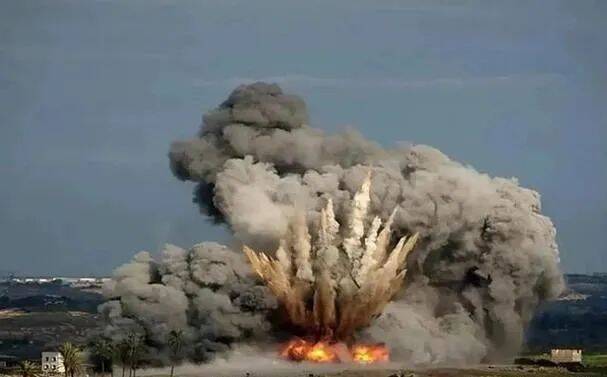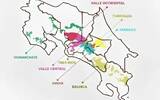Houthi armed forces implement a maritime blockade! Red Sea crisis continues in 2025
According to media reports, the British Maritime Trade Action Office said the Yemeni Houthi claimed responsibility for two attacks on merchant ships off the coast of Yemen on the 10th, one of which caused damage, but there were no casualties. According to Yemeni Houthi spokesman Yahya Saleya, the Olympic Spirit "was hit by 11 ballistic missiles and two drones," and claimed it was an "American oil tanker."
According to a report by the Maritime Trade Action Office, a Liberian-flagged vessel was sailing from Jeddah, Saudi Arabia, to Muscat, Oman, carrying chemicals and was hit by an unknown projectile in the waters near the Yemeni Red Sea port city of Hodeida, causing minor damage, but there were no reports of fire or casualties and the vessel was currently heading to its next port of call.
In addition, the Houthi militant group also claimed to have carried out a missile attack on the ship St. John in the Indian Ocean, saying that the company to which the ship belonged violated the decision to occupy the Palestinian port, although the news has not been confirmed by the Maritime Trade Action Office.
Recently, a spokesman for the Houthi forces in Yemen issued a statement saying that the Houthi forces in Yemen have launched two attacks on Israel. In addition, the spokesman stressed that the Houthi forces in Yemen will continue to take more military operations and impose a naval blockade until Israel stops its military operations against the Gaza Strip and Lebanon.
It is reported that Yemeni armed forces fired two missiles in the first attack, attacking two military targets in the central Israeli city of Tel Aviv. In the second attack, Houthi forces deployed a number of drones to hit multiple targets in the central Israeli city of Tel Aviv and the southern port city of Eilat.

Since the outbreak of a new round of Israeli-Palestinian conflict in October last year, in order to pressure Israel to stop its military operations in the Palestinian Gaza Strip, Houthi forces in Yemen have frequently attacked foreign merchant ships passing through the Red Sea. According to statistics, so far, the Houthi have launched nearly 80 attacks in the Red Sea, causing a lot of losses.
But at present, due to the recent escalation of Israeli military operations in the Gaza Strip and Lebanon, the Houthi forces in Yemen continue to take more military operations, leading to an escalation of the situation in the Red Sea region. The move forced multinational cargo ships and merchant ships to avoid attacks by avoiding the Suez Canal and bypassing the Cape of good Hope in South Africa, causing voyages to be delayed by 10 to 14 days and shortages of some products, driving up logistics costs in disguise. Global container shipping giants Maersk and Hebrot, which expect the Red Sea to remain unsafe in 2025, decided to continue to detour the Cape of good Hope in South Africa.
In addition, recent accidents at terminals in several countries have also affected international logistics, such as a three-day strike at ports on the east coast of the United States in early October and the recent shutdown of some terminals in the south caused by Category 3 Hurricane Milton. These events have led to the accumulation of a large number of ships and containers, affecting global supply chains. In addition, as ships detour to southern Africa, the handling capacity of terminals in countries such as Kenya and Tanzania has increased, but the port infrastructure is relatively backward, resulting in the accumulation of cargo and the continued congestion of port vessels, resulting in a decline in the efficiency of port operations. At the same time, with the congestion of multinational ports and the increase of shipping time, the shortage of containers is serious.
These problems have a great impact on the coffee trade, which is very dependent on sea transportation, and the coffee trade is also disrupted. In particular, on the Eurasian route, according to some coffee exporters, freight rates from Asia to Europe have increased nearly sevenfold, causing some buyers to reduce their purchases of coffee in the Asian region, resulting in a sharp drop in coffee shipments. the financial resources of coffee growers have also been hit hard. And due to the rise in freight rates, coupled with a number of countries reported production cuts, international coffee prices have also risen wildly.

According to the International Coffee Organization (ICO) Coffee, the monthly average price index of coffee in September was 258.90 cents / lb, up 8.4% from August and 69.1% from the same period last year. And international coffee futures prices are also strong, Arabica coffee futures prices reached the highest level since September 2011, Robusta coffee futures prices reached the highest level since May 1977. ICO believes that coffee prices are mainly supported by climate-affected production in many countries, as well as the global logistics crisis and geopolitical factors. Coffee prices will remain high in the short term.
For more information about coffee producing areas, please scan the code directly and follow: coffee comments.
Long press the QR code to follow:
TRANSLATE with
XEnglishArabicHebrewPolishBulgarianHindiPortugueseCatalanHmong DawRomanianChinese SimplifiedHungarianRussianChinese TraditionalIndonesianSlovakCzechItalianSlovenianDanishJapaneseSpanishDutchKlingonSwedishEnglishKoreanThaiEstonianLatvianTurkishFinnishLithuanianUkrainianFrenchMalayUrduGermanMalteseVietnameseGreekNorwegianWelshHaitian CreolePersian
TRANSLATE with
COPY THE URL BELOW
BackEMBED THE SNIPPET BELOW IN YOUR SITE Bing Webmaster PortalBack
Important Notice :
前街咖啡 FrontStreet Coffee has moved to new addredd:
FrontStreet Coffee Address: 315,Donghua East Road,GuangZhou
Tel:020 38364473
- Prev

How to make latte? Steps to make Latte Latte! What kind of milk is good for latte? What coffee beans are good for milk coffee?
The arrival of autumn and winter has made hot lattes a favorite for everyone again. After all, who wouldn't want to have a heart-warming cup of coffee in a chilly (exaggerated) weather? The key is still so sweet! Therefore, many friends started making hot lattes at home. Because of this, many friends have been received from the front street backstage
- Next

Why is honey processing common in Costa Rica? How many kinds of honey treatments are there?
When it comes to sweeter coffee, many people think of Costa Rican coffee, because most Costa Rican coffee uses the Honey Process, which is a kind of coffee processing between sun-drying and water-washing. The coffee processing method can increase the sweetness and caramel of the coffee
Related
- What is the standard process for the purpose of coffee cup testing? What is the difference between hand-brewed coffee and cup testing?
- How to use hand-brewed coffee paragon small golden balls? How does cold coffee lock in the aroma of coffee?
- Is American coffee black? What is the difference between American coffee and drip coffee?
- Unexpected! Well-known tea beverage brand Lele Tea will withdraw from the Zhengzhou market!
- Starbucks enters the fashion and beauty industry?! Netizen: Give me an ice American eye cream
- Why can American refills for free? The difference between Americano and American drip pot coffee
- Being chased out of the rain in front of Starbucks?! Store: Sheltering from rain under umbrellas poses a safety hazard
- The white moonlight has changed?! Lucky launches "Big Winter Pear American"
- Hand-brewed coffee three-stage method, high-sweet and universal brewing method to share! What does the high sweet water level of hand-brewed coffee mean?
- What is the difference between raw, refined and full espresso coffee? How to extract espresso and taste good?

